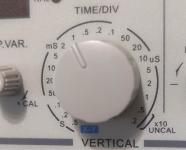Dave i am desperate!!! Now how can i do to solve this impossible Jigsaw??
The solution to the problem is in your own hands.
By now you have figured out how to use your scope and you have done very well with it.
And I think you can understand what the CPU is trying to achieve, either using the NOP generator, or the program in UD9 that is trying to write to the first element of the screen memory display at address $8000.
Therefore you need to put your thinking cap on. What could be broken stopping it from working ?
You have already figured out that the address lines look ok, and the address buffer IC's are ok, and you know the CPU is ok (because you swapped it).
You don't know yet if the data bus buffer IC's E9 and E10 are ok. Or if the UD9 chip select is working properly yet because of the difficulties getting the scope to see it.
It is time to figure this out for yourself, or it could be a very longer road. All the information you need is right in front of you and in this thread.
When it comes to successful repairs, in complex electronic systems, they occur when the person doing it understands how the circuit is supposed to work. Without that it can become a very hit and miss process, guessing at solutions.
In your case, I think you have learnt enough now to be able to figure it out at this point, without being desperate anymore.

